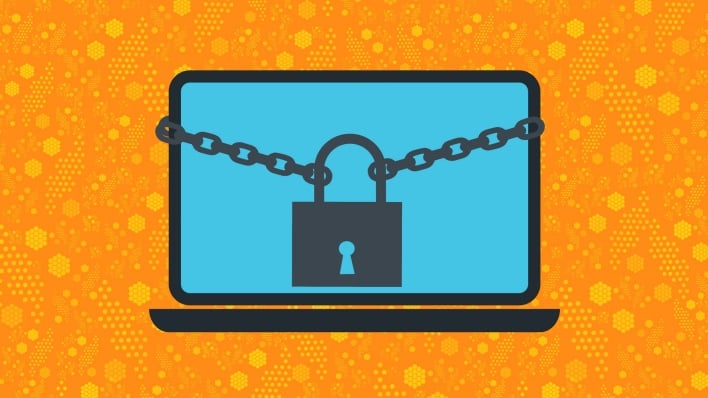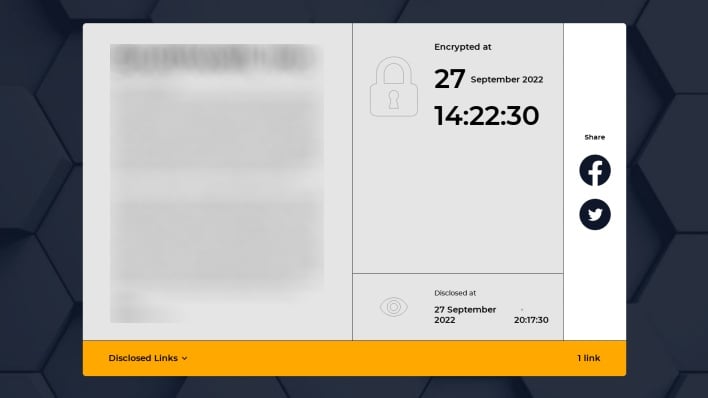FBI Advisory Warns Active Hive Ransomware Gang Has Extorted $100M And Counting

Two weeks ago, the Biden administration convened the second International Counter Ransomware Summit, warning that ransomware attacks are outpacing efforts to mitigate them. Now, the Federal Bureau of Investigation (FBI), the Cybersecurity and Infrastructure Security Agency (CISA), and the Department of Health and Human Services (HHS) have released a joint cybersecurity advisory alerting network defenders and organizations to the danger posed by the Hive ransomware gang. According to the advisory, the gang has struck over 1,300 companies and collected around $100 million in ransom fees from its victims.
Like most other ransomware gangs, Hive operates according to the ransomware-as-a-service (RaaS) model, with developers providing the group’s own proprietary ransomware to affiliates who carry out ransomware attacks. The developers then take a cut of the ransom payments made by victims. The Hive ransomware gang is particularly persistent when trying to collect ransom payments from uncooperative organizations. The advisory states that “Hive actors have been known to reinfect—with either Hive ransomware or another ransomware variant—the networks of victim organizations who have restored their network without making a ransom payment.”
The advisory also notes that Hive doesn’t use a single method of initial intrusion, as the gang’s various affiliate actors employ different tactics, techniques, and procedures (TTPs). Thus, organizations that have managed to address one or two vulnerabilities known to be leveraged by Hive affiliates may still be vulnerable to attacks by other affiliates. Hive affiliates have been found to use a wide variety of different techniques to gain unauthorized access to victims’ networks, often beginning with phishing emails that escalate to unauthorized Remote Desktop Protocol (RDP) or virtual private network (VPN) access. Some Hive affiliates have even leveraged critical security vulnerabilities to bypass multi-factor authentication (MFA).
Like most other ransomware gangs, Hive operates according to the ransomware-as-a-service (RaaS) model, with developers providing the group’s own proprietary ransomware to affiliates who carry out ransomware attacks. The developers then take a cut of the ransom payments made by victims. The Hive ransomware gang is particularly persistent when trying to collect ransom payments from uncooperative organizations. The advisory states that “Hive actors have been known to reinfect—with either Hive ransomware or another ransomware variant—the networks of victim organizations who have restored their network without making a ransom payment.”
The advisory also notes that Hive doesn’t use a single method of initial intrusion, as the gang’s various affiliate actors employ different tactics, techniques, and procedures (TTPs). Thus, organizations that have managed to address one or two vulnerabilities known to be leveraged by Hive affiliates may still be vulnerable to attacks by other affiliates. Hive affiliates have been found to use a wide variety of different techniques to gain unauthorized access to victims’ networks, often beginning with phishing emails that escalate to unauthorized Remote Desktop Protocol (RDP) or virtual private network (VPN) access. Some Hive affiliates have even leveraged critical security vulnerabilities to bypass multi-factor authentication (MFA).

Keeping in line with other RaaS groups, the Hive developers also maintain a dedicated leak site (DLS) named “HiveLeaks”, where the group publicizes some of its attacks in order to conduct double extortion. In double extortion, the ransomware gang not only encrypts the files on victims’ computers, making them inaccessible, but also exfiltrates its own copy of said files. The ransomware gang then threatens to publish the stolen files to its DLS for anyone to see, unless the victim pays the ransom.
Hive also operates a site that exists specifically to facilitate communication between victims and the ransomware gang. Upon encrypting victims’ systems, the Hive ransomware leaves behind a ransom note that includes the .onion address for this site, as well as login credentials unique to each attack. The note instructs readers to use the Tor Browser to visit the site and enter negotiations with Hive’s “sales department.” The note also warns victims not to contact law enforcement or hire ransomware recovery services, stating that law enforcement won’t let victims pay to recover their files and that recovery companies usually fail in their negotiations.
The cybersecurity advisory recommends a number of measures that organizations can implement to reduce the risk of becoming the next Hive ransomware victim. These recommendations include applying security patches ASAP, implementing phishing-resistant MFA, maintaining offline encrypted backups, and monitoring logs for indicators of compromise (IOCs.) The advisory emphasizes the importance that healthcare and public health (HPH) organizations in particular implement such measures, given the sensitivity of the customer data stored in their systems.
Hive also operates a site that exists specifically to facilitate communication between victims and the ransomware gang. Upon encrypting victims’ systems, the Hive ransomware leaves behind a ransom note that includes the .onion address for this site, as well as login credentials unique to each attack. The note instructs readers to use the Tor Browser to visit the site and enter negotiations with Hive’s “sales department.” The note also warns victims not to contact law enforcement or hire ransomware recovery services, stating that law enforcement won’t let victims pay to recover their files and that recovery companies usually fail in their negotiations.
The cybersecurity advisory recommends a number of measures that organizations can implement to reduce the risk of becoming the next Hive ransomware victim. These recommendations include applying security patches ASAP, implementing phishing-resistant MFA, maintaining offline encrypted backups, and monitoring logs for indicators of compromise (IOCs.) The advisory emphasizes the importance that healthcare and public health (HPH) organizations in particular implement such measures, given the sensitivity of the customer data stored in their systems.
The advisory also highlights the following vulnerabilities, which Hive affiliates are known to leverage, even though patches are available:
| Vulnerability | Description |
| CVE-2020-12812 |
An improper authentication vulnerability in SSL VPN in FortiOS 6.4.0, 6.2.0 to 6.2.3, 6.0.9 and below |
| CVE-2021-31207 | Microsoft Exchange Server Security Feature Bypass Vulnerability |
| CVE-2021-34473 |
Microsoft Exchange Server Remote Code Execution Vulnerability |
| CVE-2021-34523 |
Microsoft Exchange Server Elevation of Privilege Vulnerability |

